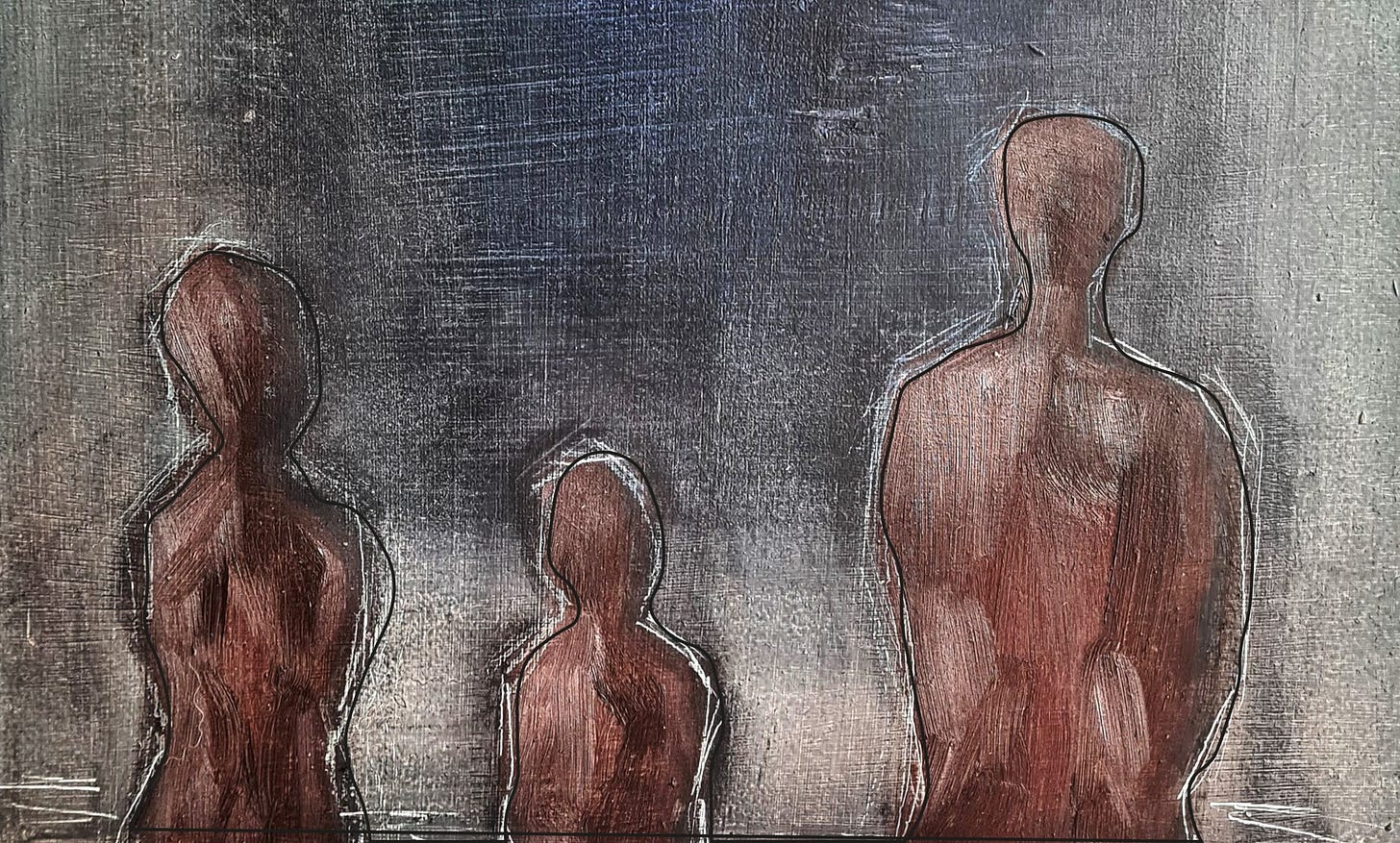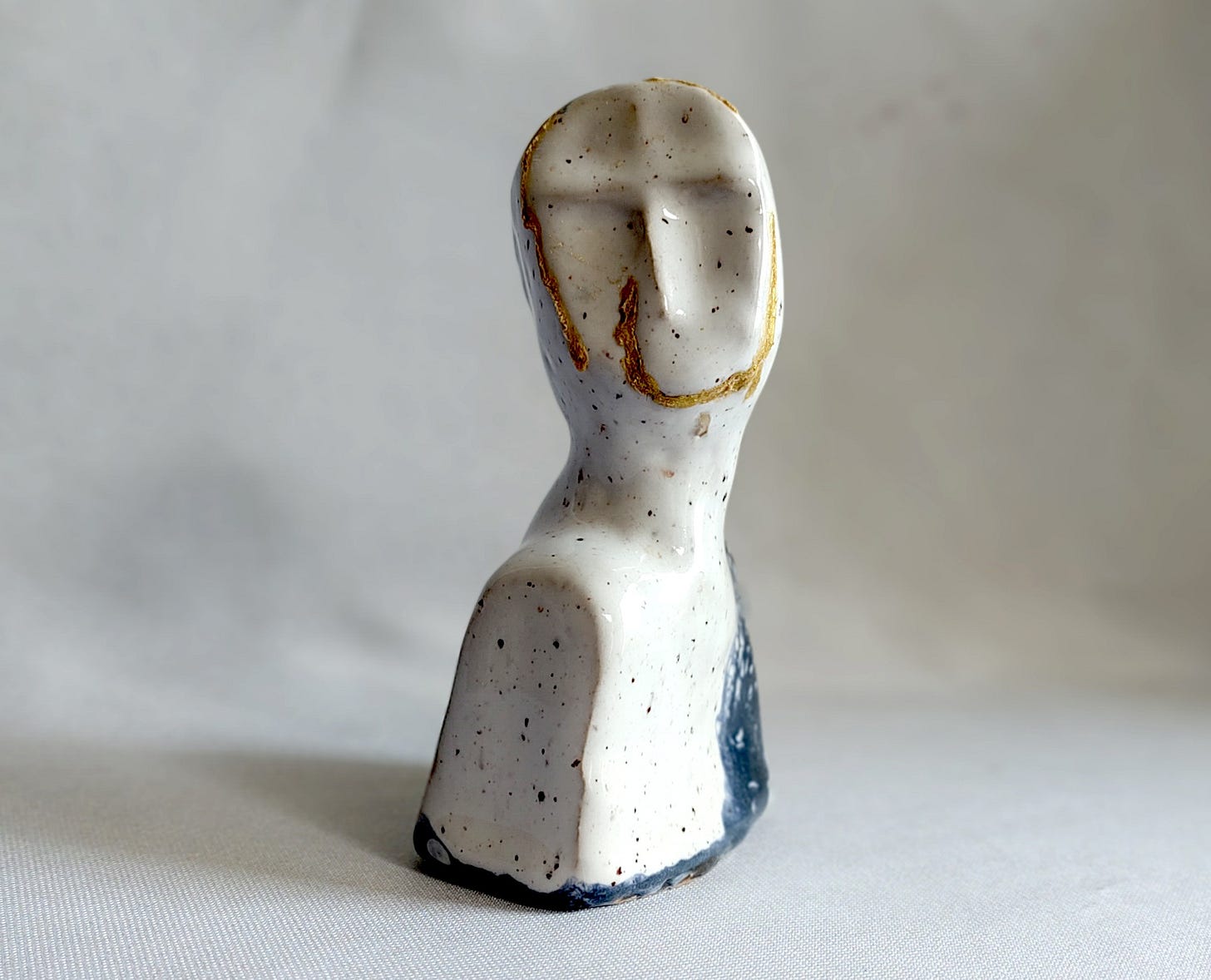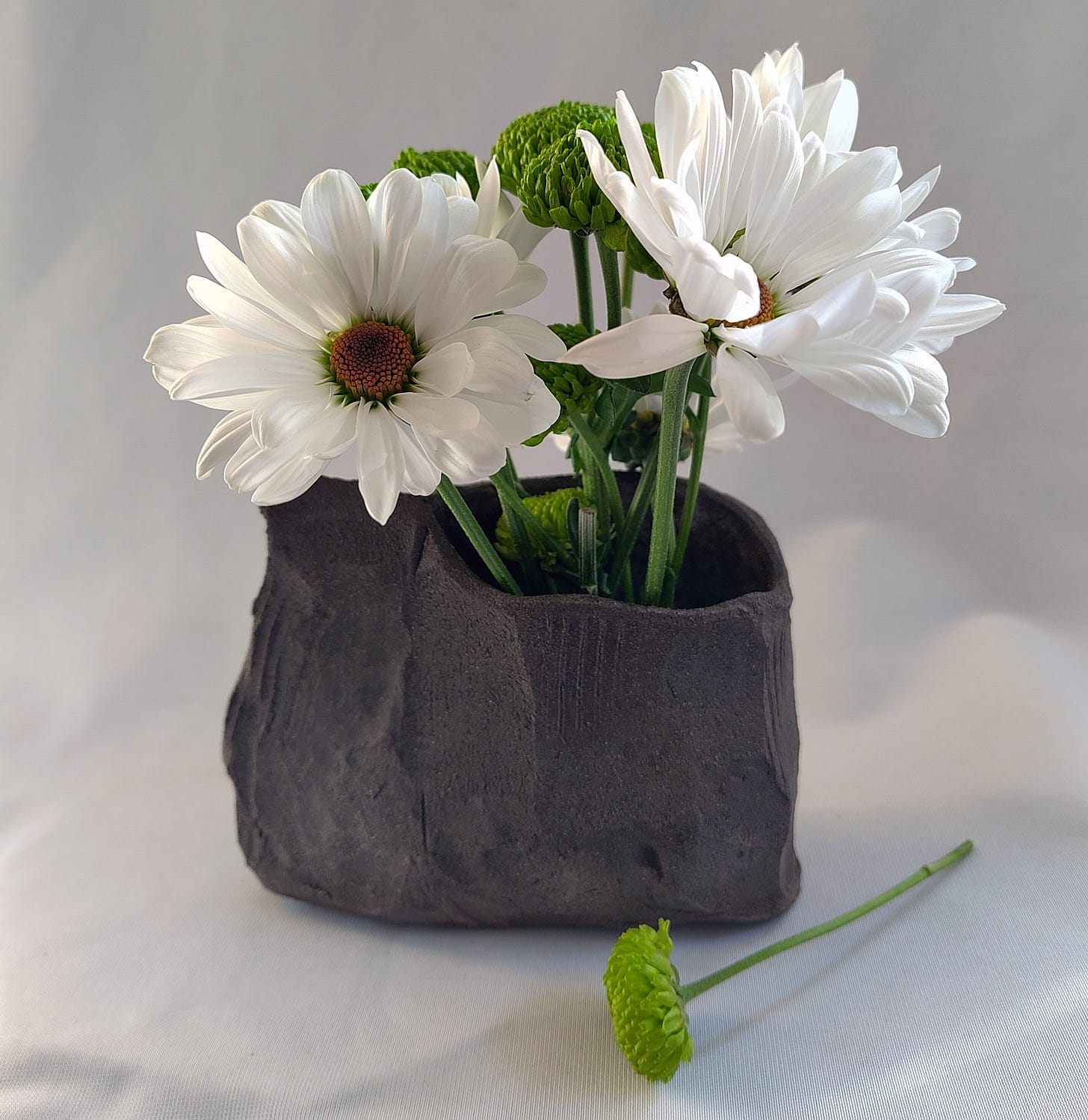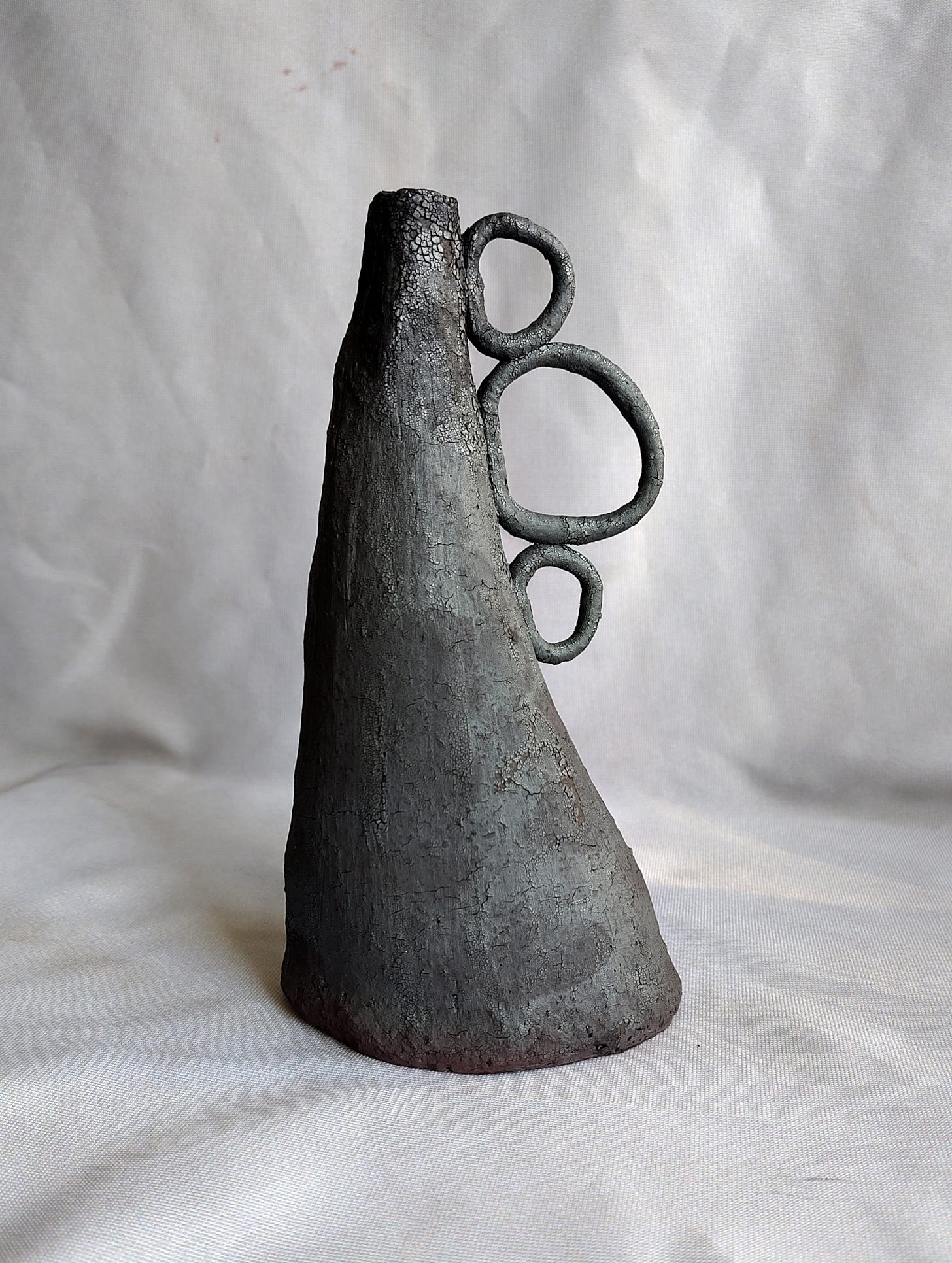When can you call yourself a proper artist?
Spoiler alert - You already are one.
Before we get into the meat of the issue, I first want to be clear about what I mean by “self-taught,” as I know that this term can be a little controversial to some. When I say I am self-taught what I mean is, I’ve had no formal training—I haven’t been to art school or enrolled in any specific courses or workshops. What I have done, however, is watched endless YouTube videos, read books, asked questions, and just tried things to see if they worked (oftentimes they didn’t). Some would argue that there is no such thing as self-taught, especially if you are learning from skilled experts on places like YouTube—after all they are still teaching you. And, yes, I would agree with this sentiment to a large extent. I am eternally grateful to all those people who give up their time and knowledge, often for free, to pass on their skills and expertise to clueless chumps like me. I would not be able to do half of what I do today if it weren’t for these magnificent people. However, for the purposes of this post and for want of a better term, I am just going to use “self-taught” to mean not taught in a formal school-like environment. Hope that makes sense and is okay with everyone.
Right, with that little disclaimer out of the way, let’s get into it.
I remember the first time I came across the term “Outsider Art.” I was reading Grayson Perry’s book Playing to the Gallery (I highly recommend it, by the way), in which he provides witty and intelligent insights into the contemporary art world. The term “Outsider Art” is common in the art industry and basically used to refer to any artist who didn’t go to a traditional art school and hasn’t entered the art world via the “normal” channels. I was immediately struck by the term “Outsider” and it left a nasty taste in my mouth. It immediately conjured up an Us vs. Them image—a seemingly unnecessary division in an already hostile and divisive industry. I think it hit a nerve!
As a latecomer to art, the more I looked into this idea of the “outsider artist,” the more I began to despair. Not only did I not go to art school, but I had spent the past two decades pursuing a very unartistic career - engineering! I didn’t have the knowledge or the contacts to even know where to begin to break into the art world. I was well and truly an outsider. What hope did I have?
I must admit that a not-so-insignificant chip began to slowly grow on my shoulder as I began to develop my practice. The more I realised that making art had been my true passion all along, the more I began to grieve for the life I could have had, had I made different choices when I was younger.
Talking to other artists only added fuel to this new, growing body part ever-hanging about in my periphery. I would hear terms like impasto, chiaroscuro, sgraffito, and mishima and have no idea what the hell they were talking about. I felt like an idiot and a fraud. But, despite that, something drove me on. I still enjoyed creating even if I didn’t technically know what I was doing. But, what started out as an activity that gave me pleasure soon evolved into an all-encompassing need—a need as real and as urgent as food and sleep. I needed to create, in whatever way and in whatever form that took.
I don’t know when it happened, whether it was a single moment, like a switch being flipped, or the product of a slow and methodical evolution, but one day I noticed it. Something had changed in my approach to my work, in my attitude. I was no longer looking online for techniques and how-to guides. I wasn’t watching videos about how to get your work noticed or what’s the best way to approach galleries. I was just working! Day in, day out, in my studio, trying things, often failing, sometimes stumbling on an effect so bizarre that I am still trying to recreate it to this day! I am no longer trying to learn the “right” way to do anything; I am just doing whatever I feel in the moment, even if that goes against conventional wisdom.
I was exhibiting at an art fair earlier this year and was casually chatting to one of the other artists. Her work was stunning—dark and macabre but somehow also charming. I was drawn to her. She was quite a bit younger than me, and through our conversation, I learned she had been to art school—most had; I was surrounded by proper artists. We got on well, and over the three days, we chatted quite a bit. When I asked her about how she had arrived at her particular style (she only painted abstract crows), she said something to me that stopped me in my tracks:
“It took me a long time to unlearn all the things I was taught at art school.”
Excuse me? I probed a little further. She believed that the critiques she got from her tutors at art school kept leading her further and further away from what she actually wanted to paint. She didn’t really know it then, but something just felt off about the work she was producing, and it ultimately led her to lose all her confidence and love for making art. It took years of trying to shake off those dissenting voices to get her to the work she now loves to create. You can see her work here.
Since then, I have heard this same sentiment from many others. Was this what finally shook off that chip on my shoulder and let me embrace the chaos of not having a clue what I was doing?
I mix oils with acrylics, I paint on bits of scrap instead of canvas, I pour vinegar over slips so they bubble and run, I mix ncompatible clay bodies, and make terra sigillata out of kaolin. Granted, none of this is revolutionary—I admit that. I am not claiming to be the first to do these things or to have invented them. These are just a few examples of things that I have been told you are not supposed to do. Mostly by other artists on forums, who always insist there is a “correct” way to do everything. But surely that depends on what you are trying to achieve in the first place, right?
A good real-life example happened to me very recently. I have joined a community pottery studio, which I pop into about once a week. It’s a welcome break from the isolation of my home studio and stops me from forgetting how to talk to other human beings. As I am new to the studio, many of the regulars assume I am also new to pottery. I’m in no hurry to correct them. I smile politely as one woman explains to me that the handles I am making for my vase are far too thin and I need to make them a lot thicker. She then proceeds to explain to me how to attach them. I nod along as she explains the way I have seen many people do it in all the YouTube videos I have ever watched of this process. I don’t say anything to her—this is just the way she has been taught, and she is kindly passing on what she has learnt, verbatim, from whoever taught her. Little does she know, however, I’ve successfully made a number of vases with these very thin handles well before I knew I shouldn’t or couldn’t. I just did!
In art, there is always a need for good technique, and mastering a skill is very important—but all that would be nothing without crazy ideas, insane innovations and creative risks. And that’s where I will never fall short!
So here’s to all the Outsiders making mad, chaotic, unusal art that flies in the face of convention. Art is art—insider or outsider. I have learnt that all we need is to trust our own creative instincts and that all work is valid if it has come from a place of love, vision or passion.
So, be less concerned with proving yourself to be a proper artist and more concerned about producing work that you are truly proud of, in all its chaotic glory!
I will leave you with this…
“Don’t think about making art, just get it done. Let everyone else decide if it’s good or bad, whether they love it or hate it. While they are deciding, make even more art.” —Andy Warhol










"crazy ideas, insane innovations" sounds like a plan
I love the way you have explained you art and passion.